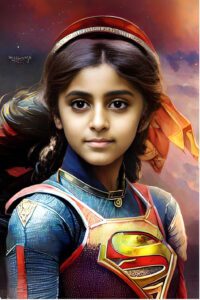Centric Consulting Celebrates Innovation with the 14th annual
CampIO — “CampIO to the Future” to kick off the summer meeting. CampIO is Centric’s internal tech conference where colleagues share passion projects, ideas, and tech insights.
After a three-year hiatus, Centric Consulting’s CampIO flipped the switch from virtual back to in person for the first time since 2019. CampIO, our annual internal technology conference, drew about 150 tech professionals and enthusiasts, tech-curious, and life-long learners to see innovative, fun, and informative presentations on topics that spanned the tech gamut.
“We are technologists. It is vital that we continue to learn,” said Eric Galluzzo, a Principal Architect with the National Tech service line and CampIO host. “If we don’t continue to learn, we’ll be irrelevant.”
Becky Gandillon, a member of the planning committee and Data & Analytics Lead in St. Louis, said she was excited to attend her first in-person event.
“As technologists, we tend to get in project silos client problem-solving,” she said. “This year, I think we were really successful at being able to network within Centric and learn from one another.”
Robert Winton, Senior Data & Analytics Consultant in St. Louis and first-time Camp IO presenter and attendee, agreed.
“I was pleasantly surprised there were so many audience members willing to sit there for a dozen 20-minute presentations and to listen to all of these ideas,” he stated. “It shows the culture at Centric and how much people care about innovation, and how interested they are in new technology and new ideas.”
CampIO — How Did We Get Here?
Galluzzo traveled back in time to remind attendees how we instituted CampIO and how it has grown since its inception in 2010. At the time, “unconferences,” or “camps” were popular, and Google hosted its own “I/O” event. Google’s IO started as an abbreviation of a numerical googol, but today stands for either “Input/Output” or “Innovation in the Open,” it’s blog says.
“The idea was that there weren’t any prepared presentations,” Galluzzo said about unconferences, adding that people gathered, self-organized, and had group discussions about what interested them in an unscheduled fashion.
Like Google, Centric had innovative projects and developments to share with others and the idea of hosting our own CampIO was born.
As the event scaled over the years, it has taken many formats, from the initial camp to operating group competitions, and even a hackathon. All our operating groups are encouraged to participate, including our Centric India team, who we fly over to present. Today, CampIO features a TED talk format in which each presenter selected by a committee gets 20 minutes to present their topic.
Even lunch provided an opportunity for learning with “table topics” discussions ranging from Star Wars to fantasy football, podcasts, and “pineapples: what’s the deal with those spiky monsters?”. Attendees could choose their lunch table based on what they wanted to chat about.
This was the first year to offer lunchtime learning, with the idea of getting people outside of their normal comfort zones and talking to those they might not have otherwise.
Demonstrating Innovation in Technology
CampIO 2023 set an attendance record, which is indicative of the culture throughout the organization, Galluzzo said. The selection committee chose 12 speakers, who presented on topics like Sveltekit, Spotify, Fabric vs Databricks, Agile coaching, automation, VR game development, and more.
Participants competed for coveted prizes including a Steam Deck video game console, a Lego “Back to the Future” Delorean model kit, and a 3D printer. Attendees voted on the winners, with each selecting their preferred prize.
Jeff Aalto, a Data & Analytics Senior Architect, won first place for his presentation “The ADHD Videographer.” Jeff’s presentation focused on object detection, video analytics, and Xamarin forms.
Jeff started his project to help his son achieve his goal of playing soccer in college by not simply filming his games to create a highlight reel but doing it better with technology. To do so, he wanted to create a portable, battery-operated, mostly autonomous solution that was able to follow the ball, had recording capabilities, and was relatively inexpensive.
There are solutions on the market, but they’re cost-prohibitive, as they’re marketed to professional teams and colleges. Jeff experienced some setbacks with his mobile app creation because he’s a PC and an iPhone user, which presented a challenge. While he got individual pieces to work, he hasn’t yet gotten it all to work together seamlessly.
“I have a newfound respect for mobile app developers,” Aalto said, adding that everything he worked with was completely new to him.
Jeff said he will take a break from his app and ask for help when he’s ready to pick it back up.
Compelling Reasons Not to Play Online Poker
The second-place prize went to Robert Winton for the presentation, “Why You Shouldn’t Play Online Poker.”
Robert presented compelling mathematical and statical analysis and the game theory optimal (GTO) framework. GTO is the “holy grail of no-limit hold’em playing strategy,” Cornell University notes.
“GTO provides this framework to make the best decisions based on the odds and hand scenario,” Robert said. “GTO tries to answer the question, ‘Is there a perfect way to play poker?’ The overwhelming consensus is yes, but no human can actually do it. There are millions of possible hands. It’s way too complicated. Nobody could keep track of all the data to do that.”
Robert demonstrated how easy it is using computer vision to gather table, hand, and player analytics to get an advantage against the opponents, making the case of why you shouldn’t play online poker.
“If you play online poker, you’re likely playing against bots or players using similar techniques. The best poker players in the world are ‘mathers,’” he explained, showing some of the many computations poker players make as they play and convincing (at least most of) the crowd not to play online poker.
How to Use Diffusion Model Adaptation to Create Custom Art
Rounding out the winners was Arindam Pal, a Senior Manager and Technology Practice Lead in Boston, for his presentation “Diffusion Models and Low-Rank Adaptation of LLMs.”
Arindam discussed a neural network technique called a diffusion model, forward and backward diffusion, and how he uses an image diffusion model to create high-resolution artwork within Stable Diffusion, an open-source product that enables the creation of text-to-image models.
“This model is inspired by thermodynamics, or how a molecule moves from a high diffusion area to a low diffusion area,” he shared. “You’re not creating anything from scratch,” but rather creating a style of artwork trained using similar images. Think DALL-E and Midjourney, which do similar computations but are not open source.
Arindam gave a demonstration on training a LoRA (low-rank adaptation) model in Stable Diffusion. This enables fine tuning diffusion models to create different styles. Fast-forward 5,000 or so steps, and you get a final image (that has never been captured photographically) that can be represented mathematically.
Arindam showed some of his many models and art he’s created using the models, ranging from his daughter as a superhero to muscle cars, scenery, and anime-style characters.
Arindam recently joined Centric and this was his first CampIO.
“For me, it wasn’t about the competition. It was about being in a room full of like-minded people doing amazing technology work outside of their roles,” Arindam said. “Being in a room of so many people passionate about technology was an amazing experience for me.”
Passion Projects Inspire Others
No matter their project, presenters captured the curiosity and imagination of attendees at CampIO. Projects inspire new technologies, new offerings, and innovative ways of serving our clients, helping deliver unmatched experiences for clients and one another.




